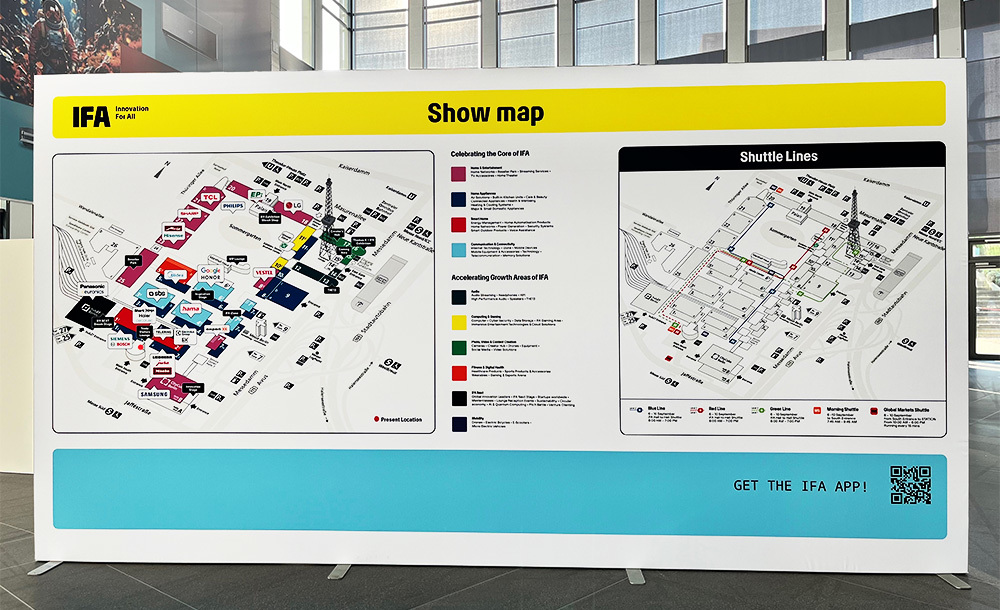I'm Kana Nakano from Dentsu Lab Tokyo. As part of the lab's R&D activities, I visited IFA 2024, Europe's largest consumer electronics trade show held annually in Berlin each September, to observe the latest trends in home appliances and technology. The latter part of this report focuses on the exhibits.
Korea, China, and Turkey
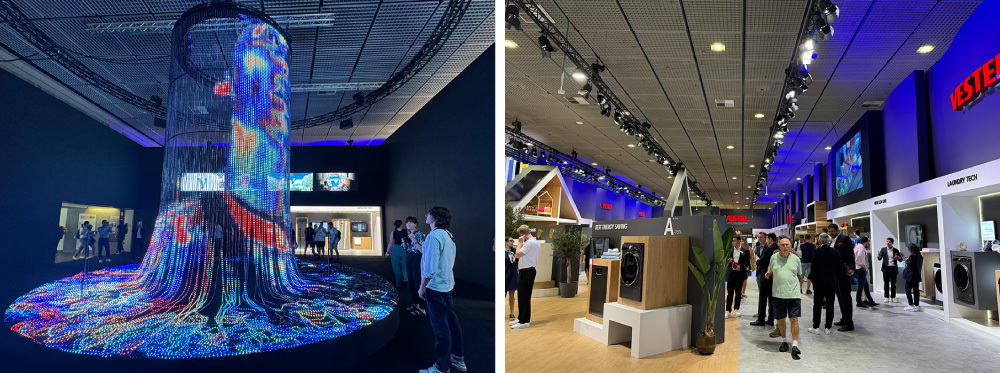
When thinking of overseas home appliances in Japan, brands like Samsung and LG from South Korea, or Midea, Haier, and TCL from China come to mind. At IFA, however, Turkey's "VESTEL" had a booth comparable in scale to these companies. While the name may be unfamiliar in Japan, Turkey's geographical position between Europe, the Middle East, and Africa is reportedly strengthening its presence as a manufacturing production base. They showcased a diverse range of products, from white goods and televisions to battery solutions and even refrigerated boxes for medical use.
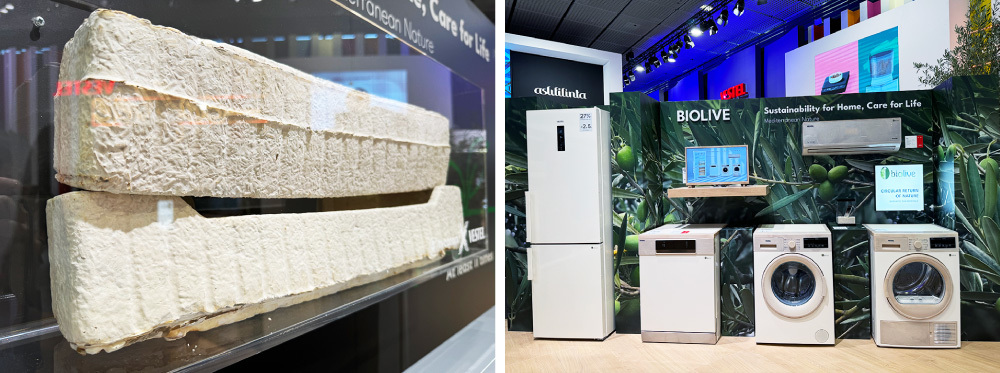
Sustainability initiatives were also showcased, including eco-friendly cushioning made from MYCONOM, derived from mushrooms, and a product series using Biolive, a bioplastic made from olive pits discarded during the production of Turkey's specialty olive oil. The fact that both collaborations are with Turkish startups further highlights their momentum.
Opportunities in Care Tech?
In the digital health sector, ring-shaped devices were prominently displayed, led by the Galaxy Ring announced by SAMSUNG in July. Massage devices, including popular fascia release guns like those found in Japan, were also showcased in diverse forms.
Personally, I was intrigued by the technology in the care sector.

In the IFA NEXT area, the Tokyo startup support program SusHi Tech Tokyo had a booth shared by seven companies. This exhibition apparently commemorated the 30th anniversary of the sister city relationship between Berlin and Tokyo.
The Sirius "switle BODY" care-use body washing tool drew visitor interest at the hands-on demo. When set up with its dedicated cleanser and tap water, its special head structure sprays water while simultaneously suctioning it back, enabling body washing without drips. Trying it out, it felt strangely refreshing—you could feel the warmth of the water and the clean sensation without the skin looking wet. While marketed for caregiving use since it can be used while the patient remains in bed, the fact that it can cleanse and rinse using just one liter of water suggests potential demand in disaster shelters too. The demo response was reportedly excellent. As a country facing advanced aging challenges, Japan's caregiving technologies seem to have global applicability.
Where do the exhibition decorations go?
One sustainability challenge at large exhibitions like IFA is what happens to the exhibition space itself afterward. No matter how much they tout circular design or energy efficiency, if carpets and display stands are discarded after a single use, it lacks credibility, right? Consequently, the use of recycled materials is gradually increasing.
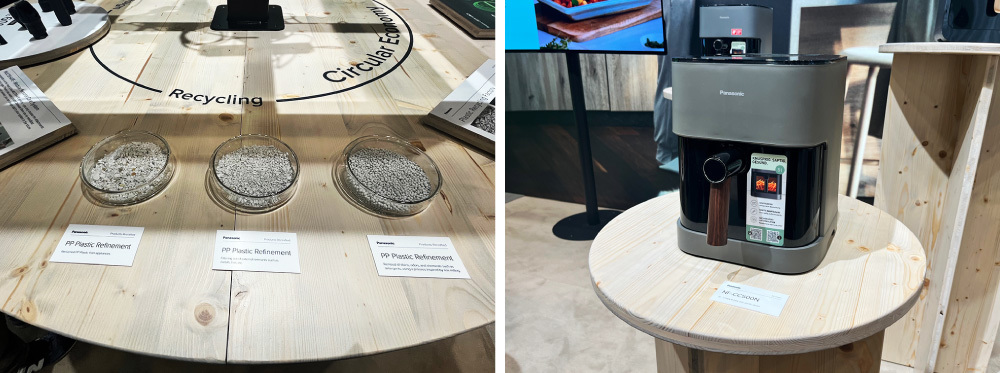
At the Panasonic booth in the IFA NEXT area showcasing next-generation technologies, products and samples of recycled materials were displayed on modular stands. They looked familiar... Upon inquiry, I learned these stands were reused from last year, making the exhibit itself a conscious effort toward sustainability.
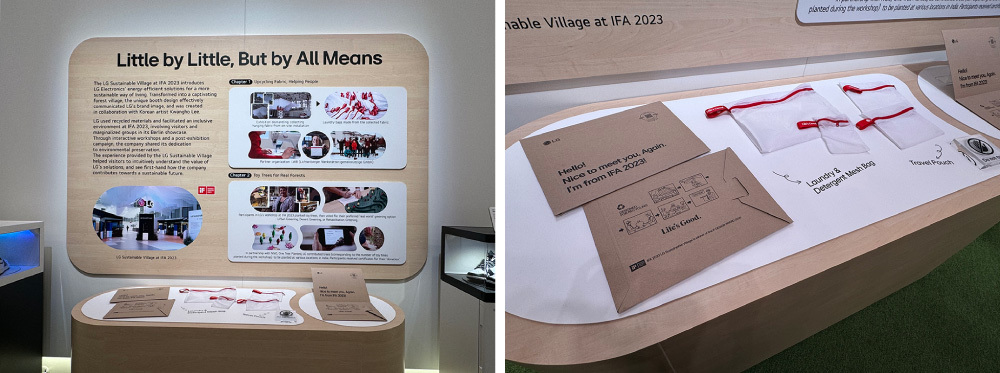
LG, which announced plans to upcycle booth decorations at IFA 2023, sent 200kg of used fabric to Berlin's Lichtenberger Werkstatt (LWB), which provides vocational training to over 600 people with disabilities. This fabric was transformed into approximately 3,000 upcycled items like eco-bags and pouches, some of which were displayed. Proceeds will support LWB.
While proposals for upcycling product packaging have increased in recent years, we may see more exhibition designs incorporating upcycling and circularity in the future.
The 100th IFA highlighted "AI," "Sustainability," and "Digital Health" as key topics. Skillful use of AI can simplify daily tasks like cooking and cleaning with the push of a button, enabling a simpler, more comfortable life. Optimizing energy usage also contributes to sustainability. Regarding health, easily measuring well-being with small wearable devices is becoming commonplace, and I sensed a growing demand for approaches that actively engage the body, such as massage or cleansing.
What technologies will become essential in our lives in the coming years? We hope this report serves as a starting point for exploring these questions together with you.
Contact: Dentsu Lab Tokyo


